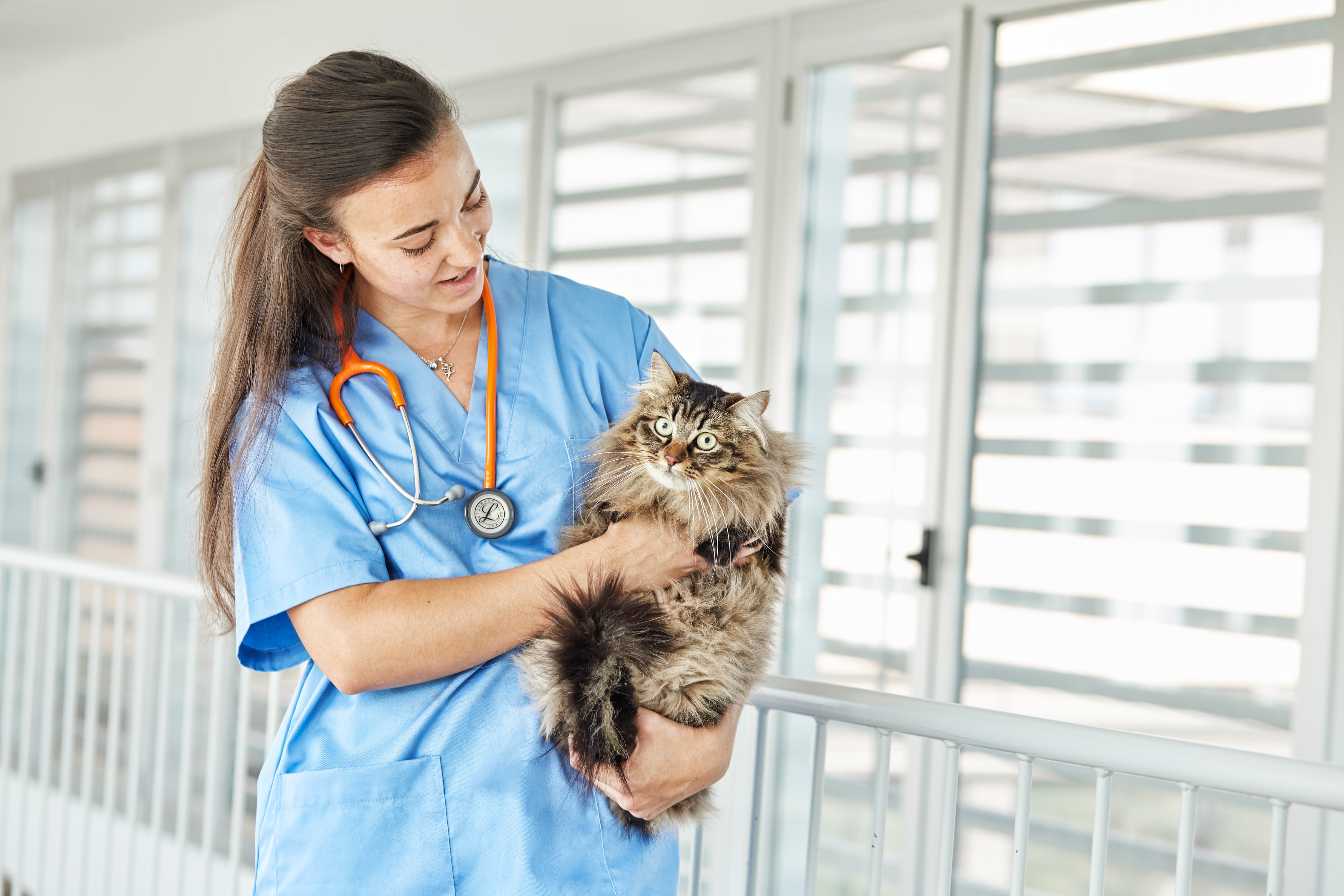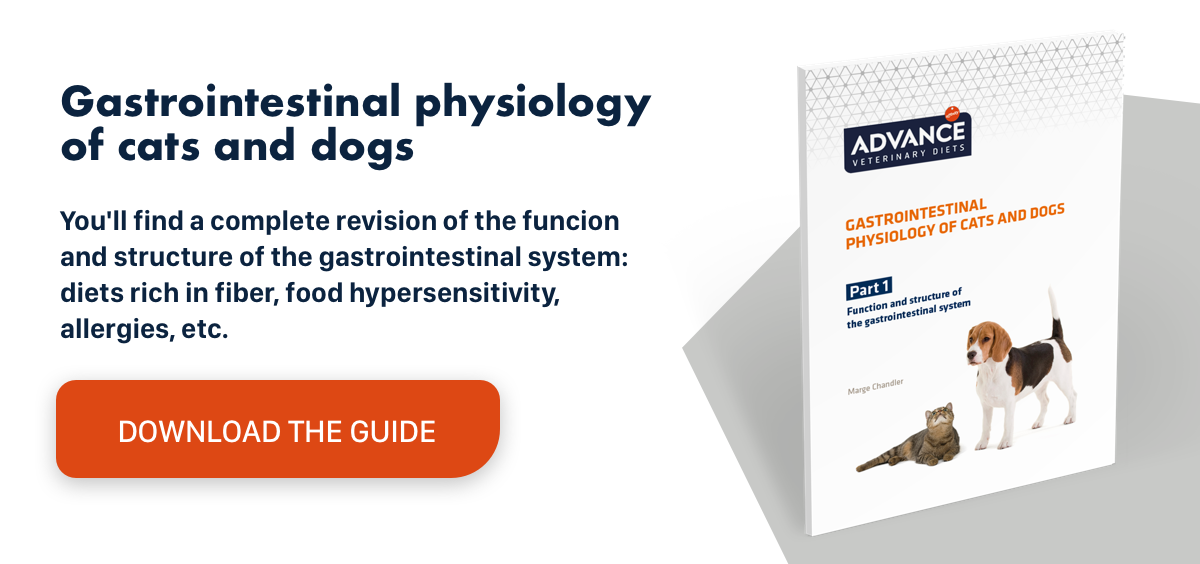Selecting diets for obese cats
Diets in cats
Sterilised cats require 30% fewer calories to maintain their weight. Consequently, they are more likely to be obese. To address this problem, the energy intake must be reduced by a further 20 to 30%. Feeding cats with a specially adapted low-calorie diet ensures they receive the correct amounts of nutrients while also losing weight.
Types of commercially available diets
There are two main types of low-calorie FOODS on the market: light foods and special therapeutic diets.
Light preparations for cats provide 15% fewer calories by increasing the volume of the food. They are enriched with fibre, and some have greater percentages of mid-range proteins to compensate for the smaller quantity of food eaten by the cat. These diets are indicated for maintaining the weight of animals prone to obesity.
Foods for sterilised cats that provide fewer calories, such as the light ranges, have a higher protein percentage and contain glycosaminoglycans (GAGs) to protect the bladder walls from inflammation and prevent idiopathic cystitis from developing.
Therapeutic diets, on the other hand, present an equilibrated balance of nutrients with a reduced calorie content. This composition is used to treat obesity by reducing the patient’s weight without any risk to its health. They have a higher percentage of protein to ensure that weight loss is not accompanied by muscle loss.

Dry food vs. wet food
Both light and therapeutic diets offer two options: dry and wet foods.
The choice depends on various factors that vets need to consider:
- Other health problems. For example, patients with dental issues or when an increase in fluid intake is indicated.
- The owner’s habits. Wet food can spoil or produce nasty smells if left out in the food bowl for too long, especially in hot weather.
- The cat’s individual preferences. Some cats refuse to eat certain types of dry food.
Wet diets are much moister as they contain over 80% water, which means tinned foods provide a greater feeling of satiety. However, wet food is usually more expensive, harder to measure out and harder to store than dry food, and owners must take this into account when choosing.
Managing the cat’s diet
Reducing a cat’s weight is not just a matter of giving it less food. It must be properly controlled to prevent other nutritional problems from developing.
Ideally, dieting cats should lose 1 to 2% of their body mass per week.
A loss of less than 1% indicates that the established diet is incorrect and the number of calories should be reduced.
A weekly loss of more than 2% of body mass indicates that the diet is too strict.
If the weight loss is too quick, it results in a decline in muscle mass. It has also been shown that weight lost rapidly is more easily regained and the patients’ body fat percentages remain high.
Therefore, it is important to monitor dieting cats closely to complete the process successfully and give them a diet with plenty of digestible protein to maintain muscle mass.
